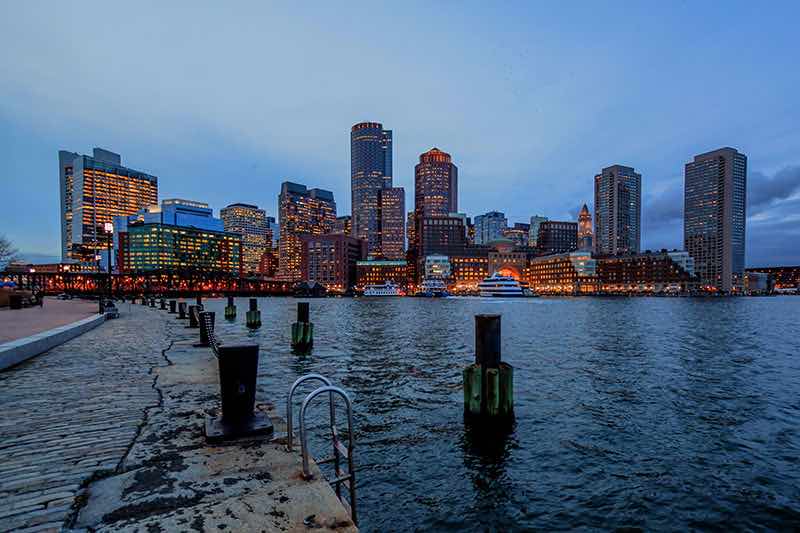
Photo: Boston Harbor via Flickr user Roberto Zingales (CC BY-SA 2.0)
February 27, 2019 (BOSTON) – 1.6 million square feet of open space across Boston’s neighborhoods will be at risk of flooding by the end of this century, according to a new study released today by Conservation Law Foundation (CLF). The report, “Climate Change and the Massachusetts Public Waterfront Act,” highlights how climate change and flooding will threaten public access to coastal tidelands across Massachusetts, as well as the changes the Commonwealth needs to make to protect this access.
“The public can’t access protected public spaces if they are underwater,” said Bradley Campbell, President of CLF. “Rising seas and more intense storms are already inundating parks and developed properties once safely above the tide line — a sobering glimpse of the more dramatic changes to come. It’s up to our elected officials to protect these public spaces and all of our waterfront neighborhoods from the looming risks of climate change before it’s too late.”
CLF collected data on the state licenses for 62 sites subject to the Public Waterfront Act in neighborhoods throughout Boston. Between 61 and 94 percent of all of these sites will be at risk of flooding over the near- or long-term. As expected, the total number of sites affected rises as sea level rise increases. Despite these risks, less than 20 percent of state licenses for the sites analyzed included any mention of sea level rise or flood risk.
The analysis shows that city-wide, 1.6 million square feet, or about 37 acres, of open space will be at risk of flooding by the end of this century. Many of these mapped open spaces are relatively new, and this proliferation of new open space is tied to booming waterfront development along Boston Harbor.
The report finds that East Boston’s open space is in the greatest jeopardy, with about 5 acres at risk of flooding from the average monthly high tide by the end of this century. The Seaport District is also extremely vulnerable, with over 13 acres of waterfront open space in danger of flooding during a 100-year storm event by the end of the century.
To remedy these risks, CLF proposes a series of changes to the state’s Waterways Program to clarify and revise certain standards and better encourage flood control.
You can read a PDF of the full report about the very real flooding risks the city’s neighborhoods face.
CLF experts are available for further comment.
###
